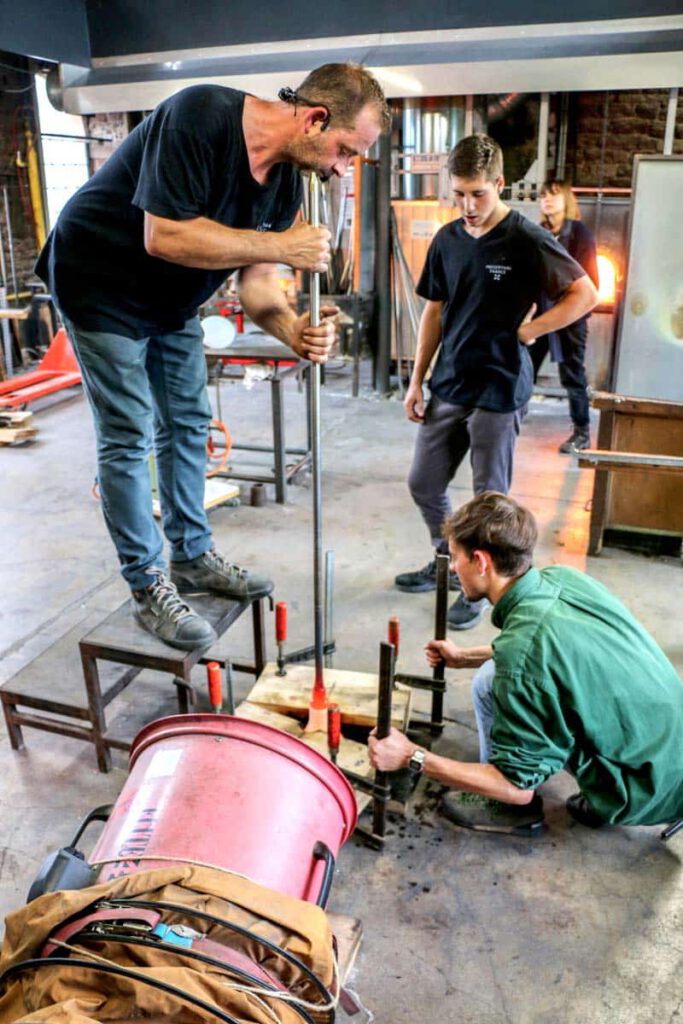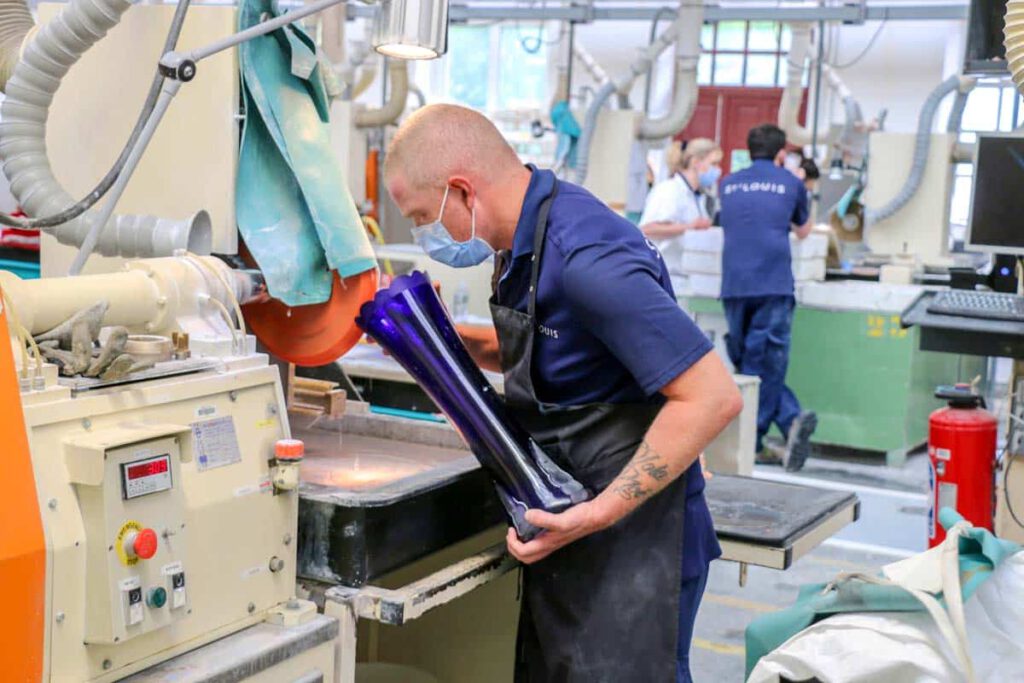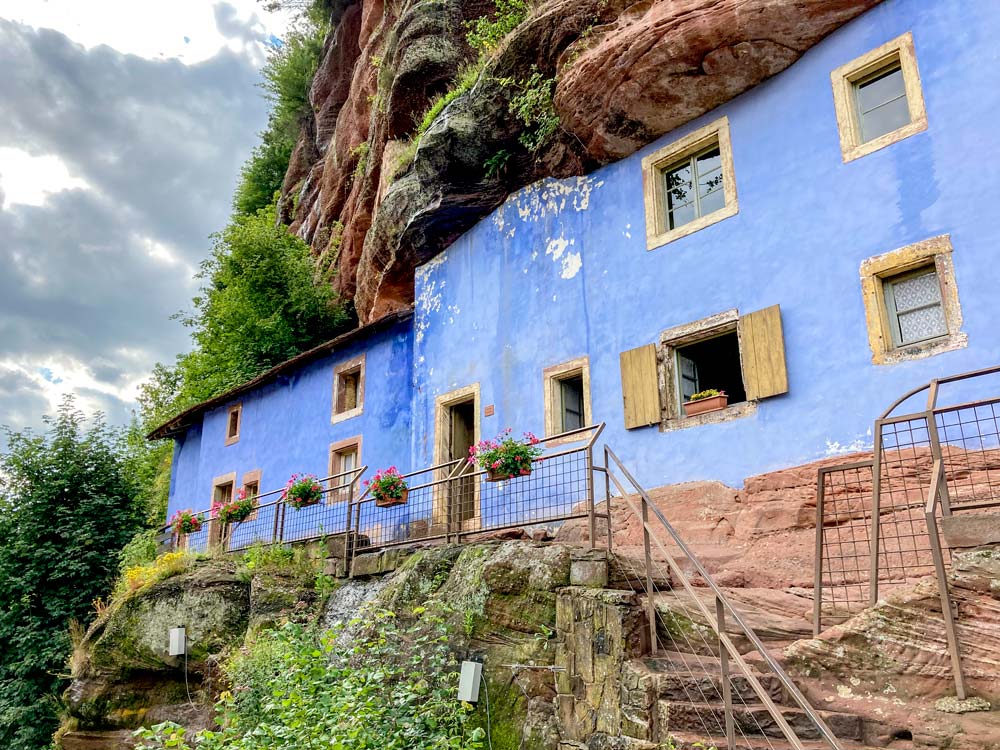At the border of Alsace and Lorraine, the art of glassblowing has been known since the Middle Ages. In Lalique, Saint-Louis, and Meisenthal, this tradition of craftsmanship is still cultivated today.
Not far from Luxembourg, in the French Grand Est region, which merged Alsace, Lorraine, and Champagne-Ardenne a few years ago, lies a small piece of land where a centuries-old culture is passionately maintained: glassblowing and grinding. Here, on the edge of Bas-Rhin and Moselle, in the north of the Vosges, along the famous “blue line” stretching through deep forests to the Alsace plain, three remarkable examples of this traditional craftsmanship are tucked away in a manageable area: Lalique, Saint-Louis, and Meisenthal.
The Lalique Museum: Pure Beauty
Our journey begins in Wingen-sur-Moder. In this expansive village in the far west of Alsace, Lalique crystal glass is created. In an 18th-century former glassblowing workshop, the founder of the Lalique house, René Lalique, who had already gained fame for his jewelry and perfume bottles, established his workshop in 1921. Choosing the Vosges as his new home after a successful career in Paris was no coincidence. Here, he could draw on local centuries-old expertise that has existed since the Middle Ages when almost everyone could blow and grind glass. The flourishing of this craft here is also due to the abundant presence of wood and sand. Wood is used to heat the furnaces, while sand is used to make glass. Today, the former glassblowing workshop houses the Lalique Museum, modernized in 2011 by star architect Jean-Michel Wilmotte (who also designed the ArcelorMittal headquarters in Luxembourg City). Visitors can fully immerse themselves in the extraordinary adventure of this brand here. And dream of beauty in its absolute perfection…
Saint-Louis, Glowing Workshop
Vases, flacons, and glass sculptures: The grace and quality of Lalique’s creations, which switched from glass to crystal in 1945, are unparalleled. The current production site is the only one of this brand worldwide, now owned by a Swiss corporation. While the glassworks located at the edge of the town cannot be visited, a film in the museum showcases the art of glassmaking in all its facets and narrates how Lalique became the legend it is today, especially known for its Bacchantes vases and decorative, undyed glasses. If you want to watch glassblowers at work live, you must head to Moselle. In the narrow valley surrounded by forests, Saint-Louis-lès-Bitche is where you’ll quickly find them. Visitors can marvel at the center of the workshop to their heart’s content! In a noisy and unbearably hot workshop, crystal (glass with lead oxide) is processed in three shifts here. The 1,200°C hot red glass paste from the furnace is immediately blown to shape high-quality glasses. In the intermediate storage workshop, goldsmiths work wonders with the crystal balls. The “cooled glass” is polished, cut, and engraved freehand with incredible dexterity by skilled masters. Here, unique vases, chandeliers, and glasses are created.


From Louis XV to Hermès
Since 1989, the luxury brand from Saint-Louis has been part of the Hermès group. Its origins, however, go back to the 18th century. In 1767, the glassworks was granted the title of “Royal Glassworks”. Pierre Nierengarten is our guide during our visit. He has worked here for forty years. Though he exudes the typical modesty of Lorraine, he cannot hide his pride as he explains that the company is currently recruiting and exports 80% of its production – mainly to the Middle East.
When in Saint-Louis, a visit to the museum is a must. The exhibition is arranged in a spiral beneath a gigantic chandelier, showcasing the house’s masterpieces – including the famous Versailles Vase.
Not far from here, in Meisenthal – also in the Moselle département – the tradition continues, not in crystal, but in glass. And what glass it is! After nearly three centuries of operation, the glassworks was forced to close in 1969, unable to compete with low-cost production. But thanks to local determination, life returned to the Meisenthal glassworks. With the opening of the museum and the relighting of the furnace in 1992, the site now presents itself, in 2021, with a fresh new look: a new reception building, the “Hall verrière” converted into an exhibition space and concert hall, and an international centre for glass artistry. Visitors can watch the master glassmakers at work with fire. The individual buildings are linked by a “concrete wave”, giving the site its distinctive architectural identity. The project, however, will only be fully complete once the museum reopens after renovation in 2022.
Meisenthal – mad about Christmas baubles!
The arts and culture centre now occupies the site of the former glassworks, once one of the birthplaces of Art Nouveau glass. The man behind it was the glass artist Émile Gallé from Nancy, who produced his works here between 1867 and 1894. Today, the Meisenthal glassworks has revived another of its emblematic creations that enjoys huge popularity: the Christmas bauble. Each year, nearly 30,000 people flock to the village between mid-November and the end of December to soak up its romantic festive atmosphere.
While local craftsmanship offers the perfect excuse for a trip to the region, there is so much more to discover. It would be a real shame to miss its natural beauty and rich cultural heritage.
Meisenthal lies less than an hour’s drive from Strasbourg. Here, in the deep forests of the Vosges, the half-timbered houses of the small Alsatian villages soon fade from view. At 581 metres above sea level (Le Grand Wintersberg), it is the ideal starting point for walks and excursions. Following the traces of the region’s rich cultural past, you can explore the Lichtenberg fortress and continue on to La Petite Pierre with its medieval castle. Also worth seeing are the rock houses of Graufthal and the citadel of Bitche. Culture, nature and craftsmanship – all good reasons to visit this charming corner of north-eastern France.

Lichtenberg – sandstone meets design
Of the 13th-century castle complex, only some of the original walls remain. It was first occupied by soldiers under Louis XIV, later serving as a defensive post against the Holy Roman Empire. The fortress was finally destroyed in 1870 by the Prussians. Reconstruction began only in the 1990s, with those in charge showing remarkable boldness. The medieval foundations became the base for modern architectural elements – most notably in the extraordinary design of the castle’s theatre. From the tower of this site, now both a cultural centre and tourist attraction, you can enjoy a breathtaking panoramic view over the village and the Vosges mountains.
Text & photos: Philippe Bourget
